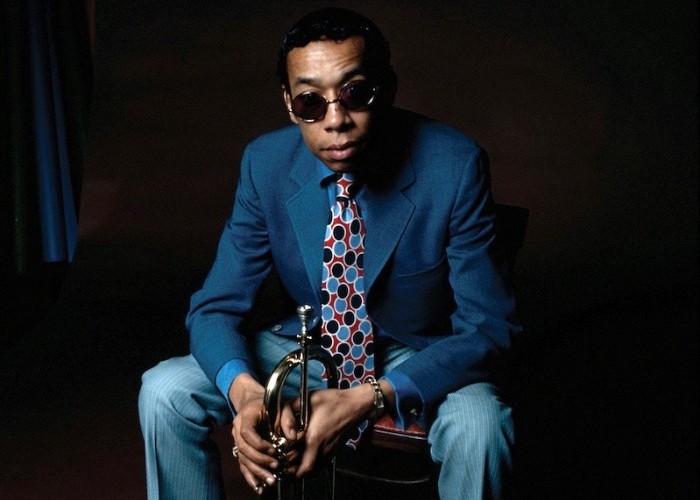Oct 28, 2025 10:47 AM
In Memoriam: Jack DeJohnette, 1942–2025
Jack DeJohnette, a bold and resourceful drummer and NEA Jazz Master who forged a unique vocabulary on the kit over his…

Lee Morgan (1938–’72)
(Photo: Joel Franklin)There aren’t many artists in the history of jazz who could turn a three-night engagement into 12 albums (eight CDs) of pure musical gold, but the Lee Morgan collection The Complete Live At The Lighthouse, Hermosa Beach, California on Blue Note does just that.
The new boxed set, to be released July 30, catches one of the greatest trumpeters in jazz at the top of his game with a band that is equal to the task: Harold Mabern on piano, Jymie Merritt on electric upright bass, Mickey Roker on drums and Bennie Maupin on tenor, flute and bass clarinet.
The box serves as an evolution of two earlier releases. The first edition of Live At The Lighthouse came out in 1970, the year the recording was made, as a single album, with four tunes. In 1996, an expanded CD version came out with 13 tunes. Now, fans can soak in the beauty of the entire run, complete with introductions, asides and announcements, such as Morgan telling the audience that Blue Note was recording the shows, so he wouldn’t be taking requests or playing older hits.
Even so, in his stellar liner notes, Jeffery S. McMillan, author of the book Delightfulee: The Life And Music Of Lee Morgan, notes that Morgan plays “The Sidewinder” and “Ceora” only once each during the entire run.
The breadth of the material here is astounding. It shows the 32-year-old Morgan and the band really stretching out on music largely written by members of the group, like three extended versions each of Maupin’s “Yunjana” or Maybern’s “The Beehive” or Merritt’s “Absolutions.” And, of course, Morgan’s “Speedball,” the band’s theme, opens and closes sets, including a 14-minute version with Jack DeJohnette, who was in the area visiting family and sat in. The best part is that the sound on these recordings delivers — crisp and clean.
So do the liner notes, from McMillan’s insightful contributions to two interviews conducted by Zev Feldman, co-producer of the box sets, with Maupin and Merritt — the two surviving members of the band — with Merritt passing away shortly after the interview. Beyond that there are insights from Blue Note President Don Was, DeJohnette, Wallace Roney, Nicholas Payton, Charles Tolliver, Eddie Henderson, Dave Douglas and more. And the photography by Joel Franklin and Lee Tanner beautifully captures the artist in that moment.
Some listeners point to this recording as a new direction that Morgan was heading with his music, but we’ll never know. He died 19 months after this date when his partner, Helen, despondent that he was going to leave her, pulled out a gun and shot him between sets at Slugs’ in New York. He was 33 years old.
As a result, we are left with Live At The Lighthouse as a final and lasting example of the young man as an artist. It’s fitting that fans, musicians and scholars now have a complete picture of that time and that music.
Catch an “unboxing” video of the complete package here. DB

Jack DeJohnette boasted a musical resume that was as long as it was fearsome.
Oct 28, 2025 10:47 AM
Jack DeJohnette, a bold and resourceful drummer and NEA Jazz Master who forged a unique vocabulary on the kit over his…

D’Angelo achieved commercial and critical success experimenting with a fusion of jazz, funk, soul, R&B and hip-hop.
Oct 14, 2025 1:47 PM
D’Angelo, a Grammy-winning R&B and neo-soul singer, guitarist and pianist who exerted a profound influence on 21st…

To see the complete list of nominations for the 2026 Grammy Awards, go to grammy.com.
Nov 11, 2025 12:35 PM
The nominations for the 2026 Grammy Awards are in, with plenty to smile about for the worlds of jazz, blues and beyond.…

Drummond was cherished by generations of mainstream jazz listeners and bandleaders for his authoritative tonal presence, a defining quality of his style most apparent when he played his instrument unamplified.
Nov 4, 2025 11:39 AM
Ray Drummond, a first-call bassist who appeared on hundreds of albums as a sideman for some of the top names in jazz…

Jim McNeely’s singular body of work had a profound and lasting influence on many of today’s top jazz composers in the U.S. and in Europe.
Oct 7, 2025 3:40 PM
Pianist Jim McNeely, one of the most distinguished large ensemble jazz composers of his generation, died Sept. 26 at…





